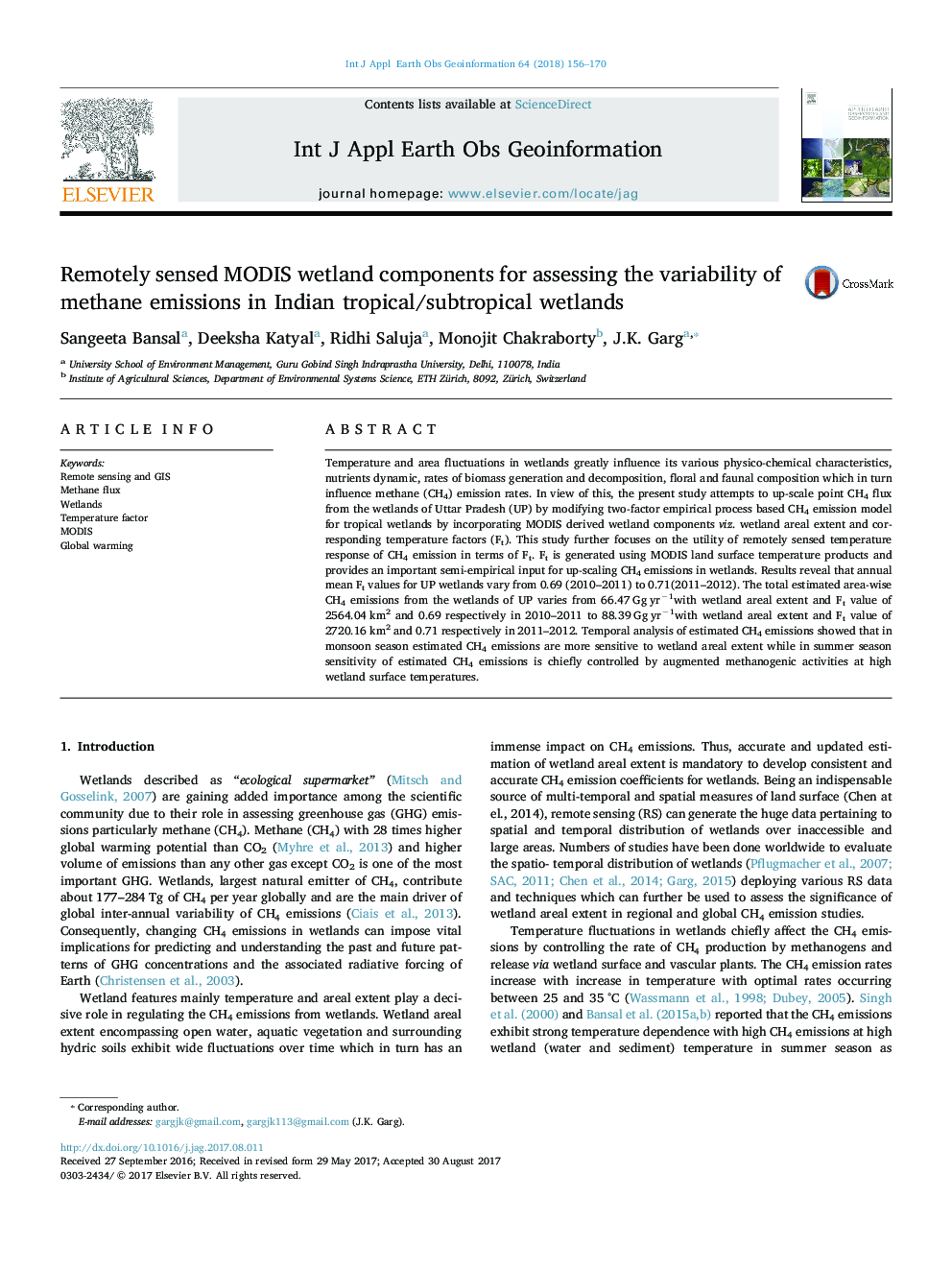| Article ID | Journal | Published Year | Pages | File Type |
|---|---|---|---|---|
| 5755426 | International Journal of Applied Earth Observation and Geoinformation | 2018 | 15 Pages |
Abstract
Temperature and area fluctuations in wetlands greatly influence its various physico-chemical characteristics, nutrients dynamic, rates of biomass generation and decomposition, floral and faunal composition which in turn influence methane (CH4) emission rates. In view of this, the present study attempts to up-scale point CH4 flux from the wetlands of Uttar Pradesh (UP) by modifying two-factor empirical process based CH4 emission model for tropical wetlands by incorporating MODIS derived wetland components viz. wetland areal extent and corresponding temperature factors (Ft). This study further focuses on the utility of remotely sensed temperature response of CH4 emission in terms of Ft. Ft is generated using MODIS land surface temperature products and provides an important semi-empirical input for up-scaling CH4 emissions in wetlands. Results reveal that annual mean Ft values for UP wetlands vary from 0.69 (2010-2011) to 0.71(2011-2012). The total estimated area-wise CH4 emissions from the wetlands of UP varies from 66.47 Gg yrâ1with wetland areal extent and Ft value of 2564.04 km2 and 0.69 respectively in 2010-2011 to 88.39 Gg yrâ1with wetland areal extent and Ft value of 2720.16 km2 and 0.71 respectively in 2011-2012. Temporal analysis of estimated CH4 emissions showed that in monsoon season estimated CH4 emissions are more sensitive to wetland areal extent while in summer season sensitivity of estimated CH4 emissions is chiefly controlled by augmented methanogenic activities at high wetland surface temperatures.
Related Topics
Physical Sciences and Engineering
Earth and Planetary Sciences
Computers in Earth Sciences
Authors
Sangeeta Bansal, Deeksha Katyal, Ridhi Saluja, Monojit Chakraborty, J.K. Garg,
